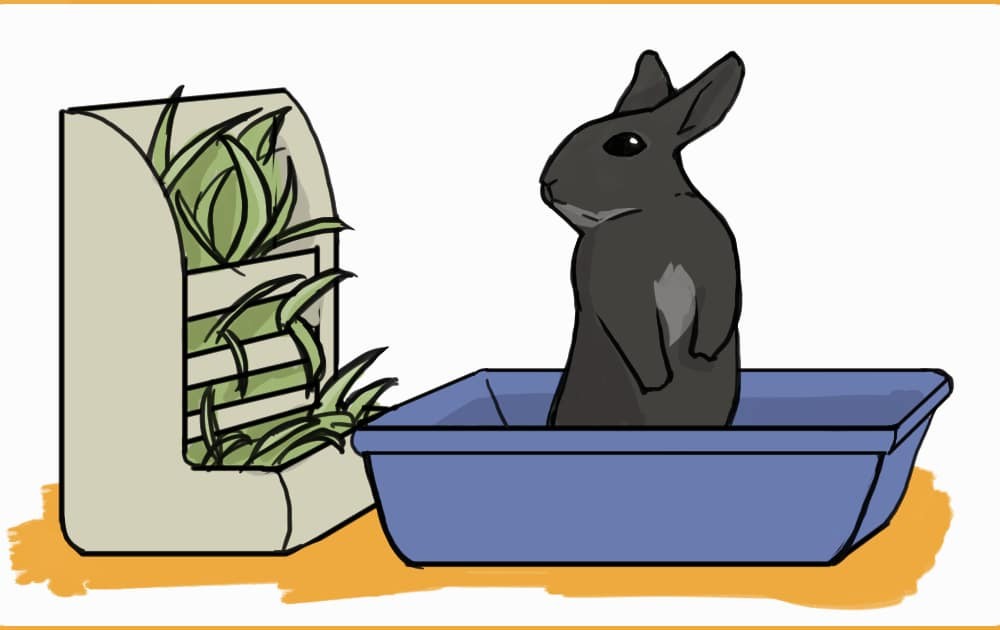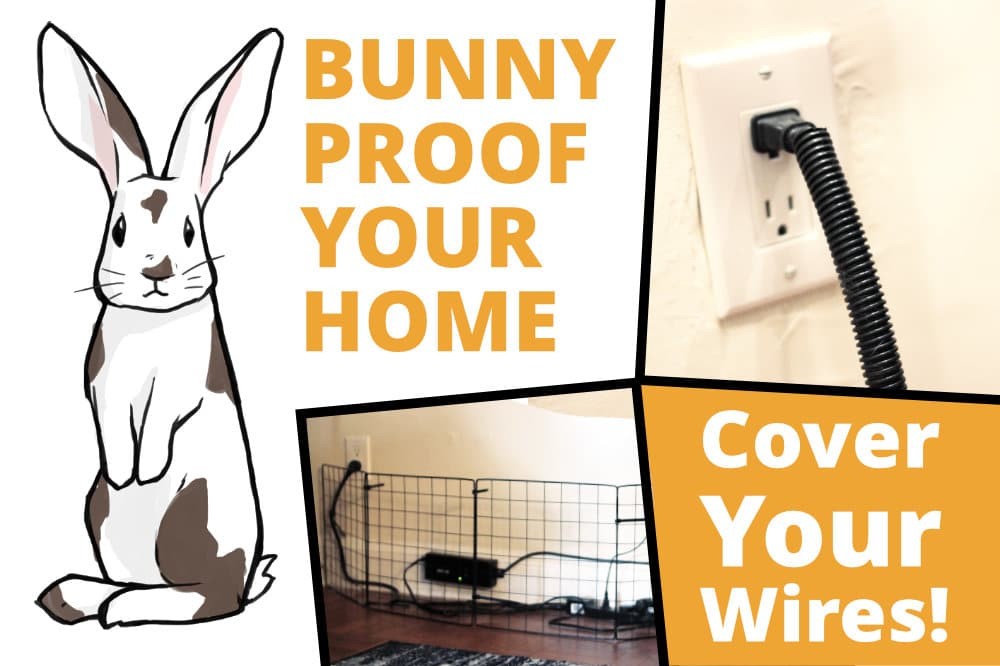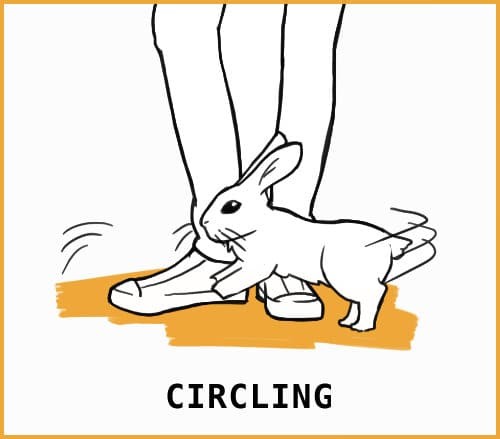Are Bunnies Clean Pets? Yes, rabbits are surprisingly clean animals, meticulously grooming themselves and keeping their living space tidy. PETS.EDU.VN believes that understanding their hygiene habits is key to successful rabbit ownership. By providing the right environment and care, you can ensure your bunny stays healthy and your home remains fresh. Discover tips and tricks for maintaining a clean and happy rabbit, including litter training, enclosure upkeep, and understanding their grooming behaviors.
1. Understanding Rabbit Hygiene: Are Bunnies Naturally Clean?
Yes, bunnies are naturally clean pets. They dedicate a significant portion of their day to grooming, meticulously cleaning their fur and keeping themselves tidy. This inherent cleanliness makes them relatively low-maintenance pets in terms of hygiene, provided their environment is well-maintained.
1.1. The Self-Grooming Habits of Rabbits
Rabbits are fastidious groomers. They use their tongues and paws to clean their fur, removing dirt and loose hair. This self-grooming behavior is crucial for their hygiene, but it also means they can ingest a lot of fur, which can lead to health issues if not managed properly. Regular brushing helps minimize fur ingestion and keeps their coat healthy.
1.2. Do Rabbits Need Baths?
Generally, rabbits do not need baths. Bathing can be stressful for them and can disrupt their natural skin oils, leading to health problems. In rare cases where a rabbit is excessively dirty or has a medical condition, a spot clean with a damp cloth may be necessary. Always avoid getting water in their ears and use rabbit-safe cleaning products if needed.
2. Litter Training Your Rabbit: A Key to Cleanliness
One of the most significant aspects of keeping a rabbit as a clean pet is litter training. Rabbits can be easily trained to use a litter box, which greatly simplifies cleaning and maintenance.
2.1. Setting Up a Rabbit Litter Box
To set up a rabbit litter box, you will need:
- A sturdy litter box: Choose a size that comfortably fits your rabbit.
- Rabbit-safe litter: Options include paper-based litter, wood pellets, or hay. Avoid clay-based litters, as they can be harmful if ingested.
- Hay: Place hay in one end of the litter box, as rabbits often eat while they eliminate.
2.2. The Litter Training Process: Step-by-Step Guide
- Observe your rabbit: Notice where your rabbit prefers to eliminate.
- Place the litter box: Put the litter box in their preferred spot.
- Collect droppings: Place some of their droppings and urine-soaked bedding in the litter box to encourage use.
- Reward positive behavior: When your rabbit uses the litter box, offer a treat or praise.
- Clean regularly: Keep the litter box clean to encourage continued use.
2.3. Troubleshooting Litter Training Issues
If your rabbit is having trouble with litter training, consider these tips:
- Spay or neuter: Unaltered rabbits are more likely to mark their territory.
- Multiple litter boxes: Provide multiple litter boxes, especially in larger spaces.
- Clean accidents immediately: Use an enzymatic cleaner to remove odors and discourage repeat offenses.
- Be patient: Litter training takes time and consistency.
3. Maintaining a Clean Rabbit Enclosure
A clean enclosure is essential for the health and hygiene of your rabbit. Regular cleaning prevents the buildup of bacteria and odors, ensuring a comfortable living space.
3.1. Daily Cleaning Tasks
- Scoop the litter box: Remove soiled litter and droppings daily.
- Wipe up spills: Clean any spills of food or water immediately.
- Check for messes: Inspect the enclosure for any other messes and clean as needed.
3.2. Weekly Deep Cleaning
- Empty the enclosure: Remove all bedding, toys, and accessories.
- Wash the enclosure: Use warm, soapy water to scrub the enclosure, removing any stuck-on debris.
- Disinfect: Use a rabbit-safe disinfectant to kill bacteria and germs.
- Rinse thoroughly: Ensure all soap and disinfectant are completely rinsed away.
- Dry completely: Allow the enclosure to dry fully before replacing bedding and accessories.
3.3. Choosing the Right Bedding and Litter
The type of bedding and litter you choose can significantly impact the cleanliness of your rabbit’s enclosure.
Bedding Options:
| Bedding Type | Pros | Cons |
|---|---|---|
| Paper-Based Bedding | Soft, absorbent, dust-free | Can be expensive |
| Fleece Blankets | Soft, washable, reusable | Requires frequent washing |
| Aspen Shavings | Affordable, absorbent | Can be dusty |
| Hay | Natural, edible, provides enrichment | Can be messy, needs frequent replacement |



Litter Options:
| Litter Type | Pros | Cons |
|---|---|---|
| Paper-Based Litter | Highly absorbent, controls odors, dust-free | Can be expensive |
| Wood Pellets | Affordable, absorbent, biodegradable | Can be hard on rabbit’s feet |
| Hay | Natural, safe if ingested, provides enrichment | Less absorbent, needs frequent replacement |
4. Rabbit Grooming: Brushing and Nail Trimming
While rabbits are excellent self-groomers, they still require some assistance from their caretakers to stay clean and healthy.
4.1. The Importance of Regular Brushing
Regular brushing helps remove loose fur, preventing it from being ingested and causing digestive issues like wool block. The frequency of brushing depends on the rabbit’s breed and coat type. Long-haired breeds like Angoras require daily brushing, while short-haired breeds may only need brushing once or twice a week.
4.2. How to Brush Your Rabbit
- Use a soft-bristled brush or a grooming mitt.
- Gently brush your rabbit’s fur in the direction it grows.
- Pay attention to areas prone to matting, such as the back and hindquarters.
- If you encounter mats, carefully trim them with scissors or a mat splitter.
- Reward your rabbit with treats and praise to make the experience positive.
4.3. Nail Trimming: A Necessary Task
Rabbit nails grow continuously and need to be trimmed regularly to prevent overgrowth and discomfort. Overgrown nails can cause pain, difficulty walking, and even infections.
4.4. How to Trim Your Rabbit’s Nails
- Use rabbit-specific nail clippers.
- Identify the quick (the pink part of the nail containing blood vessels and nerves).
- Trim the nail just before the quick, avoiding cutting into it.
- If you accidentally cut the quick, use styptic powder to stop the bleeding.
- Trim nails every 4-6 weeks, or as needed.
5. Rabbit-Proofing Your Home: Preventing Messes and Damage
Rabbits are curious and playful animals, and they can get into trouble if their environment is not properly rabbit-proofed.
5.1. Protecting Your Furniture and Belongings
- Cover furniture with blankets or sheets to protect it from chewing and scratching.
- Use corner guards to prevent rabbits from chewing on baseboards and walls.
- Store valuable items out of reach.
5.2. Keeping Wires and Cords Safe
- Cover electrical cords with plastic tubing or cord protectors.
- Elevate cords off the floor using cord organizers.
- Unplug cords when not in use.
5.3. Preventing Digging
- Provide a designated digging area, such as a box filled with shredded paper or hay.
- Place plastic mats or rugs in areas where your rabbit likes to dig.
- Redirect digging behavior with toys and enrichment activities.
6. Common Misconceptions About Rabbit Cleanliness
Many people have misconceptions about rabbit cleanliness. It’s important to dispel these myths to understand the true nature of rabbit hygiene.
6.1. Myth: Rabbits Are Smelly Pets
Truth: Rabbits themselves are not smelly. The odor often associated with rabbits comes from unclean enclosures. Regular cleaning of the litter box and enclosure will eliminate any unpleasant smells.
6.2. Myth: Rabbits Are Low-Maintenance Pets
Truth: While rabbits are clean animals, they require consistent care and attention to maintain their hygiene. This includes litter box cleaning, enclosure maintenance, grooming, and rabbit-proofing the home.
6.3. Myth: Rabbits Can Be Left Alone for Extended Periods
Truth: Rabbits are social animals that need interaction and attention. Leaving them alone for long periods can lead to boredom, depression, and destructive behaviors.
7. Health Benefits of a Clean Rabbit and Environment
Maintaining a clean rabbit and environment is crucial for their overall health and well-being.
7.1. Preventing Flystrike
Flystrike is a serious condition that occurs when flies lay eggs on a rabbit’s skin, typically around the rear end. The hatching maggots then feed on the rabbit’s flesh, causing pain and infection. Keeping the rabbit and its enclosure clean is the best way to prevent flystrike.
7.2. Reducing the Risk of Skin Infections
A clean environment reduces the risk of skin infections, such as dermatitis and ringworm. Regular grooming helps prevent matting, which can trap moisture and bacteria against the skin.
7.3. Minimizing Respiratory Issues
Dust and ammonia from unclean enclosures can irritate a rabbit’s respiratory system, leading to respiratory infections. Using dust-free bedding and litter and cleaning the enclosure regularly can minimize these issues.
8. Creating a Stimulating and Clean Environment
A stimulating environment keeps rabbits happy and prevents boredom-related messes.
8.1. Providing Toys and Enrichment
- Chew toys: Offer a variety of chew toys to satisfy their natural chewing instincts.
- Tunnels and hideaways: Provide tunnels and hideaways for rabbits to explore and feel secure.
- Foraging toys: Use foraging toys to encourage natural foraging behaviors.
- Interactive toys: Engage rabbits with interactive toys that require problem-solving.
8.2. Encouraging Exercise and Play
- Daily exercise: Allow rabbits access to a safe and spacious area for daily exercise.
- Playtime: Spend time playing with your rabbit, offering toys and engaging in interactive activities.
- Supervised outdoor time: If possible, allow supervised outdoor time in a secure enclosure.
8.3. Rotating Toys and Activities
Rotate toys and activities regularly to keep your rabbit engaged and prevent boredom. This also helps prevent them from becoming overly attached to one item and neglecting others.
9. Recognizing Signs of Poor Hygiene in Rabbits
Being able to recognize signs of poor hygiene in rabbits is essential for addressing issues promptly.
9.1. Common Symptoms to Watch For
- Matted fur: Indicates inadequate grooming or underlying health issues.
- Dirty rear end: Can be a sign of obesity, dental problems, or digestive issues.
- Skin irritations: May indicate allergies, parasites, or infections.
- Loss of appetite: Can be a sign of illness or stress.
- Lethargy: Indicates a potential health problem.
9.2. When to Consult a Veterinarian
If you notice any signs of poor hygiene or illness in your rabbit, consult a veterinarian experienced in rabbit care. Early detection and treatment can prevent serious health complications.
10. Frequently Asked Questions About Rabbit Cleanliness
Here are some frequently asked questions about rabbit cleanliness:
10.1. Are Rabbits Easy to Litter Train?
Yes, rabbits are generally easy to litter train, especially if they are spayed or neutered. Consistency and positive reinforcement are key.
10.2. How Often Should I Clean My Rabbit’s Litter Box?
You should scoop the litter box daily and perform a deep clean weekly.
10.3. Do Rabbits Need Baths?
No, rabbits generally do not need baths. They are excellent self-groomers.
10.4. How Often Should I Brush My Rabbit?
The frequency of brushing depends on the rabbit’s breed and coat type. Long-haired breeds require daily brushing, while short-haired breeds may only need brushing once or twice a week.
10.5. What Are the Best Types of Litter for Rabbits?
Paper-based litter and wood pellets are excellent choices for rabbit litter. Avoid clay-based litters, as they can be harmful if ingested.
10.6. How Can I Prevent My Rabbit From Chewing on Furniture?
Provide plenty of chew toys and rabbit-proof your home by covering furniture and protecting cords.
10.7. Are Rabbits Good Pets for People With Allergies?
Rabbits can be a good option for people with mild allergies, but it depends on the individual. Spending time with a rabbit before committing to ownership is recommended.
10.8. What Are the Signs of a Healthy Rabbit?
Signs of a healthy rabbit include a clean coat, bright eyes, good appetite, and active behavior.
10.9. How Can I Keep My Rabbit’s Enclosure From Smelling?
Regular cleaning of the litter box and enclosure, along with using absorbent bedding and litter, will help prevent odors.
10.10. Can Rabbits Get Fleas?
Yes, rabbits can get fleas, especially if they have access to the outdoors. Consult your veterinarian for safe flea treatment options.
Maintaining a clean and healthy rabbit is a rewarding experience. By understanding their hygiene habits, providing a clean environment, and offering proper care, you can enjoy the companionship of these wonderful pets.
Are bunnies clean pets? Absolutely! With the right care and attention, rabbits can be clean, delightful companions. Remember, a clean rabbit is a happy rabbit, and a happy rabbit makes for a joyful home.
For more expert tips and guidance on rabbit care, visit PETS.EDU.VN. Our comprehensive resources cover everything from diet and health to behavior and enrichment, ensuring you have the knowledge and support to provide the best possible life for your bunny.
Ready to take the next step in providing exceptional care for your rabbit?
Visit PETS.EDU.VN today to discover:
- In-depth articles: Learn about rabbit health, nutrition, and behavior.
- Expert advice: Get guidance from experienced rabbit caregivers and veterinarians.
- Product reviews: Find the best products for your rabbit’s needs.
Don’t wait – unlock the secrets to a happy, healthy, and clean rabbit by exploring PETS.EDU.VN now!
Contact Us:
- Address: 789 Paw Lane, Petville, CA 91234, United States
- WhatsApp: +1 555-987-6543
- Website: pets.edu.vn
